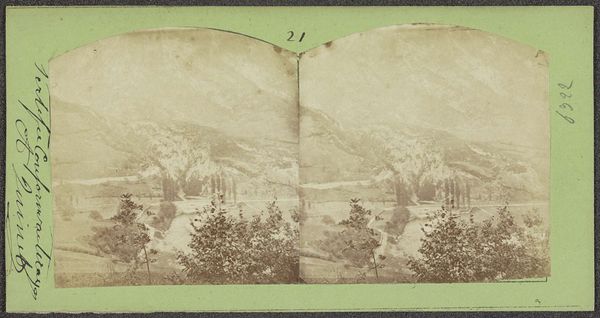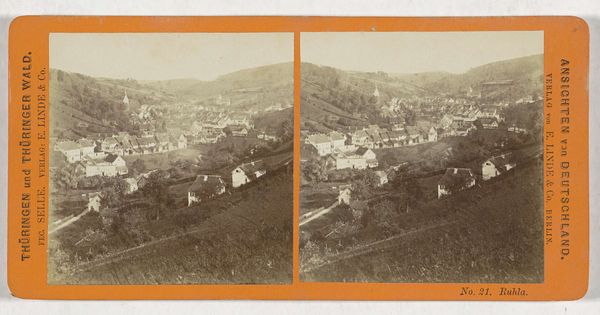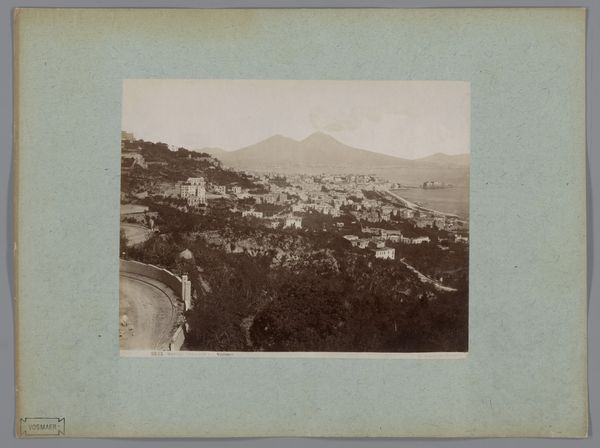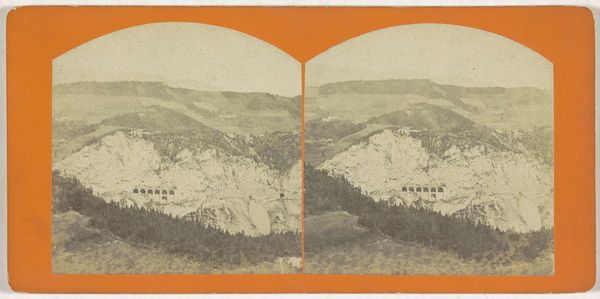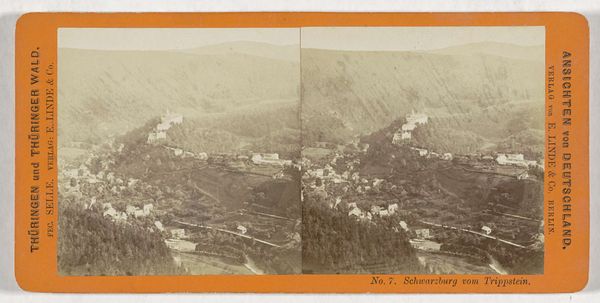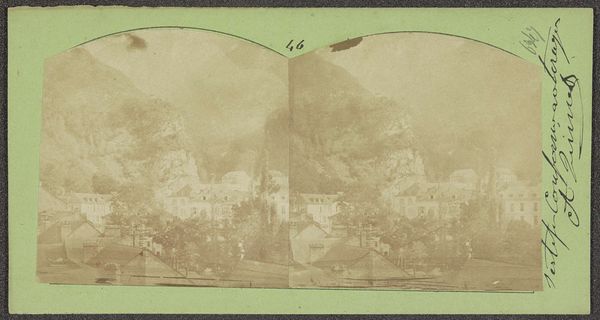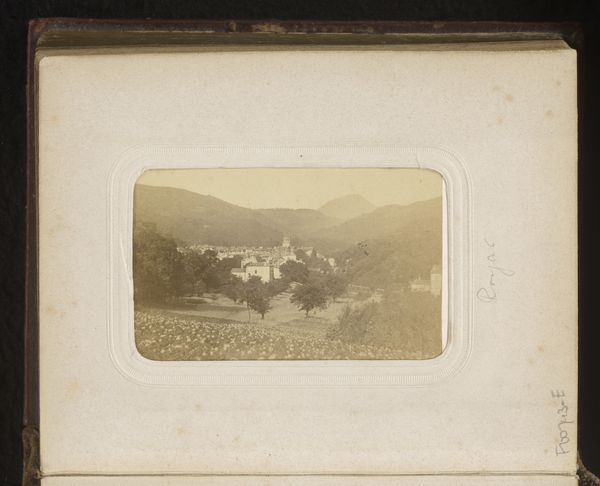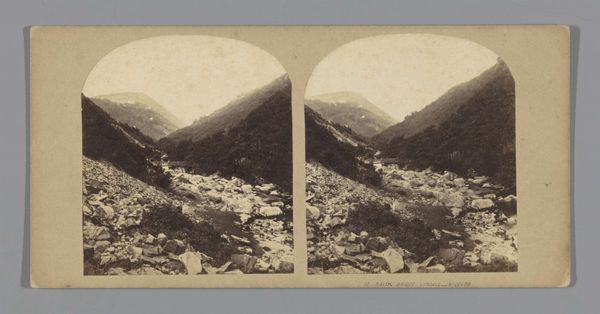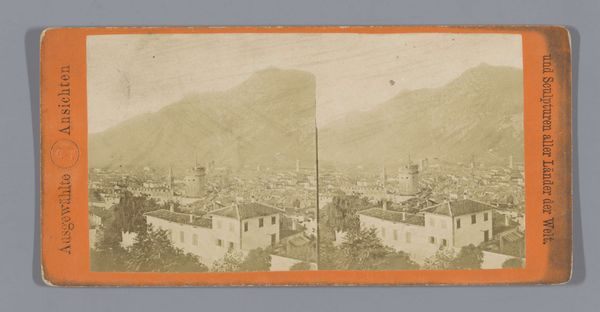
Dimensions: height 90 mm, width 170 mm, height 76 mm, width 76 mm, height 76 mm, width 76 mm
Copyright: Rijks Museum: Open Domain
Curator: Here we have "Village at the Foot of a Mountain; the Alps" by Achille Quinet, created sometime between 1860 and 1880. It is currently held at the Rijksmuseum and was made using the daguerreotype photographic process. Editor: The tonality immediately strikes me. The monochromatic browns lend the scene a subdued, almost wistful, character despite its potentially grand scale. Curator: Indeed, the limited tonal range contributes to a flattening effect, visually compressing the space despite the clear recession of the village into the mountainous backdrop. The contrast reinforces a rigid structure. Editor: Thinking about Quinet's process here, one has to appreciate the sheer labor and precision involved in crafting a daguerreotype landscape like this back then. Imagine carrying the equipment, preparing the plates in the field... it really underscores the physicality of early photography, right? It’s not just pointing and shooting; it’s a whole chemical and material process contingent on the surrounding environment. Curator: Absolutely. The laborious nature underscores the intentionality behind the framing and composition. Notice the subtle arc of the mountains mirroring the composition within the photographic frame—a formal decision amplifying the impact of depth. Editor: Right, and knowing it’s a daguerreotype – a unique image, not easily reproduced – heightens our awareness of its preciousness. Each scratch or imperfection tells a story of handling and age, turning the object into a relic of the era of exploration and landscape romanticism. It certainly underscores the historical implications tied to both place and the laborious construction of images in that time. Curator: Very insightful. It's in these subtle complexities that Quinet invites the viewer to not just observe the village scene but also engage in an aesthetic meditation of the very means of representing it. Editor: For me, the true power here is realizing it documents more than scenery. This object contains not only Quinet's dedicated labour but also hints at the dawn of image production technologies and access to a new visual paradigm. Curator: Precisely; a point well considered. Thank you for these insights.
Comments
No comments
Be the first to comment and join the conversation on the ultimate creative platform.
